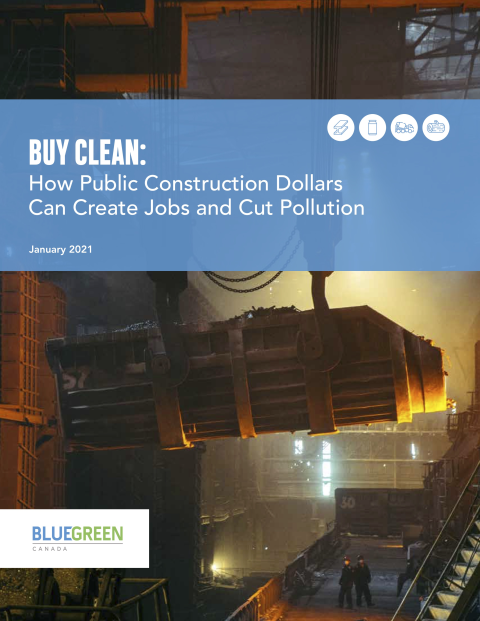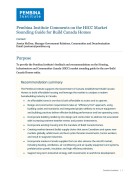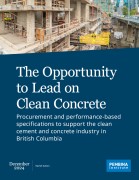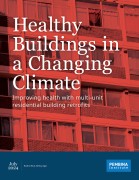Is Canada missing an opportunity to align investments in public infrastructure with its commitment to achieve net-zero carbon pollution by 2050?
This report — prepared by Blue Green Canada, an alliance of Canadian labour unions, environmental and civil society organizations, of which Pembina Institute is part — looks at the priority Canada has given to both tackling climate change and investing in public infrastructure, and the need to invest in domestic, low-carbon building materials as a way to reduce pollution.
“When governments use their public infrastructure dollars to prioritize environmentally sustainable, low-carbon construction materials, they’re participating in a growing movement called Buy Clean — and it’s a crucial component in our economic recovery,” the report says.
What is “buying clean” and how can Canada decarbonize its steel, aluminum, cement and timber sectors? Not only does buying low-carbon supplies support jobs in Canada but domestic materials are typically lower carbon than imports and require less transportation, thereby reducing transportation emissions.
In order to “buy clean,” Blue Green Canada makes three recommendations for Canada:
- “Continue to use and expand government procurement to support Buy Clean policies so that public infrastructure dollars prioritize lower carbon materials, fuels, and processes, thereby creating new markets, supporting jobs, and stimulating demand for these products.
- “Develop an Industrial Decarbonization Strategy— including construction material manufacturing— to help identify the carbon advantage of Canadian industries and manufacturers, to demonstrate, commercialize, and promote high-potential technologies to further reduce the carbon footprint of Canadian manufacturers, and to help Canadian products become the lowest carbon products in the world.
- “Establish a Clean Infrastructure Challenge Fund to encourage the use of low carbon building materials in the construction of public infrastructure, and showcase their potential for inclusion in all forms of public infrastructure.”
Download the full report for an in-depth look at the Buy Clean movement.






